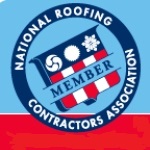East Meadow Roofing: Article About How Your Roof Stays Weatherproof
Flashing is a general name for thin strips of impermeable materials that are installed around the joints of your building. It's commonly found protecting edges where roof sections come together or at the base of protrusions like chimneys, and it plays a vital role in stopping water from entering your home via these vulnerable spots.
Question and answer courtesy of East Meadow roofer How long does roof flashing last?Under normal conditions, flashing will last for many years, but several factors can affect its longevity. Improper installations may prevent flashing from creating a tight seal, and water that seeps under these building materials and expands may subsequently lead to peeling or separation. Different kinds of traditional flashing materials, such as lead and copper, are also known for surviving the elements and UV exposure for longer time periods than more affordable alternatives like PVC.

Your roof's primary function is to keep water and the elements outdoors where they belong, and each roof performs this task using a wide range of methods. The failure of any one component, however, can lead to material damage that negatively affects the rest of your weatherproof barrier, so it's best to learn your way around your roof's anatomy now.
The first line of defense for most East Meadow roofing is some form of slope. Even roofs that appear flat employ a very slight angle that allows moisture to run off to one side instead of pooling in one place. Such a feature may seem simple, but it drastically reduces the chance that water will seep through barriers and weaken structures.
Although most people know that the top layers of their roofing, such as shingles, tiles and stone fills, help keep the weather out, these layers are only one method of waterproofing. These substances do stop a great deal of debris and moisture, but they mainly serve to protect the innards of the roof.
Beneath a roof's upper surfaces lies any number of impermeable barriers made from pitch-impregnated organic fibers, strong plastic films or even solid sheets of fiberglass. These layers do most of the work required to keep your home dry and allow for proper upward ventilation, but they are still susceptible to exposure in certain areas.
Have a question regarding gutters and leaders or Supreme skylights? Please ask a roofer from Long Island Roofing of East Meadow.
For instance, two sections of roofing that come together at a sharp angle are vulnerable to water entry at their joints. It's harder to seal the edges of flat membranes and roofing members, and any water that gains access via these regions could reduce the integrity of the entire surface. Debris is much the same; small rocks and bits of dirt that become lodged between layers of roofing can easily widen gaps and allow more foreign bodies to enter.
The accepted way to solve such issues is to simply cover the gaps with flashing. Substances like heavy metals, composites, alloys and plastics are commonly used to create effective seals. Flashing must be installed around protruding dormer windows, skylights, vents, chimneys and any other fixtures that exit through holes in the roof surface. It also makes an appearance around otherwise unprotected edges that might be subjected to the elements.
Naturally, different materials will last longer than others. Like all roofing members, flashing is routinely subjected to the forces of gravity, tension, wind and thermal expansion. As a result, it's critical that your flashing has the ability to maintain its shape under consistent long-term strain and that the material is securely affixed to the roof itself.
Flashing ought to be inspected yearly along with the rest of your roof; in many cases, damaged sections can be reinstalled or patched without requiring an entire overhaul. These fixes are minimal, but they provide huge gains because they extend your roof's lifetime by years or even decades.









